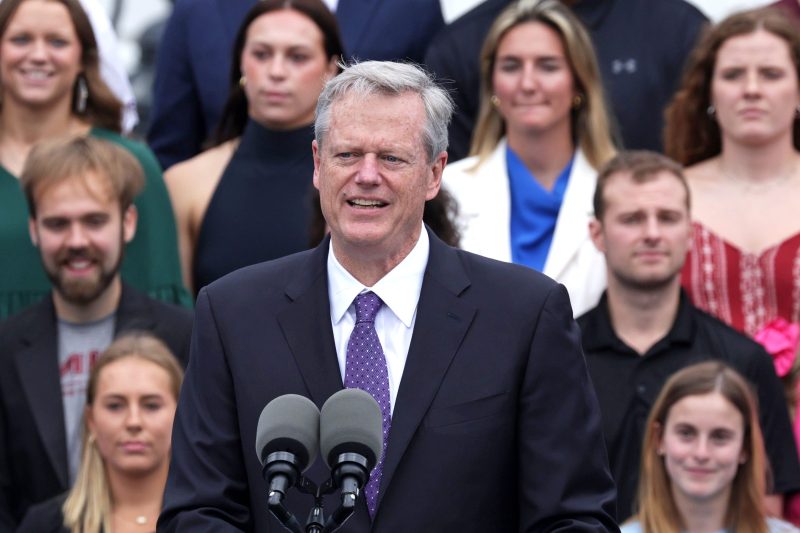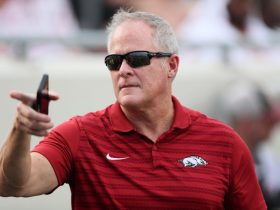SAN ANTONIO – Amidst significant skepticism within college sports that the House vs. NCAA settlement will bring calm and order to the financial relationships between athletes and schools, NCAA president Charlie Baker said Saturday that the system outlined in the settlement will be “far better than what we are dealing with” if ultimately approved and implemented.
A final hearing on the settlement and various objections to the terms is set for Monday in front of U.S. District Court Judge Claudia Wilken, but the NCAA expects and hopes it will be approved without significant changes.
The key element of the settlement with regard to the future structure of college sports is a revenue sharing agreement and a third-party clearinghouse that will police name, image and likeness deals to determine whether they are within the range of fair market value. The NCAA entered into an agreement recently with Deloitte to run the clearinghouse.
Some administrators and coaches have questioned whether it’s even possible to accurately gauge fair market value of NIL deals being offered to athletes and whether attempts to punish schools for trying to circumvent what amounts to a salary cap will spawn another round of lawsuits.
Baker said that having some structure around NIL and the ability to collect data about how much money schools are spending on their athletes in various sports will be beneficial to the overall environment.
“Right now we have nothing like that,” Baker said. “We don’t have any way to gauge or judge exactly what’s going on out there. It’s all anecdote and representation, which is not really very helpful if you’re trying to determine what’s really happening. At minimum, what we’re going to get out of this is two processes, both of which will have real elements to them around submission of information and approval. And over time, it will make it possible to aggregate that data.”
PREDICTIONS: Our experts forecast who wins Final Four semifinals
TOP SEEDS: Where does this Final Four rank with the best ever?
Of course, one of the reasons the settlement won’t necessarily protect the NCAA from being sued over various regulation attempts in the future is its inability to get Congressional action on an antitrust exemption or other law that would protect its model despite more than five years of intense lobbying.
Baker, the former governor of Massachusetts, was in fact hired to replace Mark Emmert largely because of his political background as college presidents increasingly saw lawmakers as their best path toward stability.
But no bill has been brought to the floor in either chamber of Congress despite multiple hearings on college sports, and it’s uncertain when or if there will eventually be a proposal that can pass the House of Representatives and get 60 votes in the Senate. The current political environment, with a closely divided partisan split and several hot-button issues dominating the conversation both domestically and abroad, probably does not lend itself college sports’ issues being a priority in Washington, D.C.
“That doesn’t mean you shouldn’t try,” Baker said. “And sometimes interesting things happen. We spent a lot of time talking to people on both sides of the aisle, both branches, and in the privacy of their offices I think there is a path forward here. We’ll see if we can get there.”
On another topic, Baker said he had not seen the comments from Connecticut women’s coach Geno Auriemma late Friday night in which he blistered the NCAA for inequalities between the men’s and women’s tournament. Baker was aware of Auriemma’s criticism from several days ago about the women having just two host sites for the Sweet 16 and Elite Eight as opposed to four.
Baker said the NCAA had spent over $15 million implementing the suggestions from a third-party review that came out of the 2021 controversy where clear inequalities were identified between the two events but said the two-regional system had been a success in his view because it had bolstered attendance at those venues.
“It was a decision made by the full women’s basketball committee, which was to enhance attendance and improve the quality of the experience for the kids,” he said. “Attendance has improved dramatically over the last three years, and I can tell you playing it with a full house has is a lot of fun if you’re a student-athlete. The rest of the stuff around the student-athlete experience across the tournament, especially in the Final Four, people spent a lot of time working with third parties and working through the data to make sure that the experience was – it’s not all the same because there’s certain things about both tournaments that are different – but people do a lot of work on this and obviously we’re always open to additional thoughts and ideas.”






